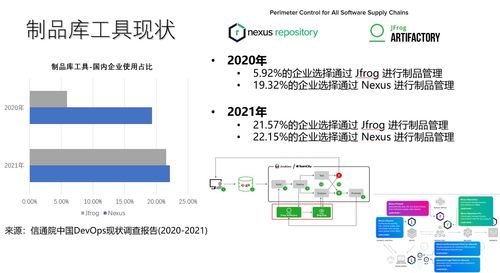您所在的位置:首页 - 百科 - 正文百科
restlet框架架构
![]() 梓丘
2024-05-09
【百科】
740人已围观
梓丘
2024-05-09
【百科】
740人已围观
摘要**Title:UnderstandingRestletFramework:Features,Benefits,andBestPractices**Restletisapopularframework
Title: Understanding Restlet Framework: Features, Benefits, and Best Practices
Restlet is a popular framework for building RESTful web services in Java. It provides developers with a powerful set of tools and features to create scalable and maintainable APIs. In this guide, we'll delve into the key aspects of Restlet, exploring its features, benefits, and best practices for effective usage.
Overview of Restlet Framework
Restlet is an opensource framework that enables developers to build lightweight, scalable, and RESTful web APIs in Java. It follows the principles of Representational State Transfer (REST), emphasizing simplicity, scalability, and interoperability. Restlet offers a comprehensive set of features that streamline the development process and promote best practices in API design.
Key Features of Restlet
1.
Unified API:
Restlet provides a unified API for handling HTTP requests and responses, abstracting away the complexities of lowlevel HTTP communication. This simplifies the development of RESTful services and ensures consistency across different components of the application.2.
Routing and Filtering:
Restlet offers a powerful routing mechanism that maps incoming requests to the appropriate resources and handlers. Developers can define routing rules based on URL patterns, HTTP methods, and request attributes. Additionally, Restlet supports filtering, allowing developers to preprocess requests, apply security checks, and postprocess responses.3.
Content Negotiation:
Content negotiation is a crucial aspect of RESTful APIs, allowing clients and servers to communicate in multiple representations (e.g., JSON, XML, HTML). Restlet provides builtin support for content negotiation, enabling automatic selection of the most appropriate representation based on client preferences and server capabilities.4.
ComponentBased Architecture:
Restlet follows a componentbased architecture, where each component encapsulates a specific functionality (e.g., routing, filtering, serialization). This modular design promotes code reuse, maintainability, and extensibility, allowing developers to assemble complex APIs from reusable building blocks.5.
Server and Client Libraries:
Restlet includes both server and client libraries, enabling developers to create and consume RESTful services seamlessly. The server library facilitates the development of RESTful endpoints, while the client library simplifies the integration of external APIs into applications.
6.
Integration with Servlet Containers:
Restlet can be deployed as a standalone server or integrated into existing Java EE containers (e.g., Apache Tomcat, Jetty). This flexibility allows developers to leverage existing infrastructure and deployment practices while benefiting from Restlet's features and capabilities.Benefits of Using Restlet
Simplicity:
Restlet adopts a straightforward and intuitive API design, making it easy for developers to understand and use. Its minimalist approach eliminates unnecessary complexity, resulting in cleaner and more maintainable codebases.
Scalability:
Restlet's lightweight architecture and efficient resource management make it wellsuited for building scalable and highperformance web services. Developers can leverage Restlet's asynchronous processing capabilities to handle large volumes of concurrent requests efficiently.
Flexibility:
Restlet provides flexibility in terms of deployment options, protocol support, and integration with thirdparty libraries. Whether you're building microservices, mobile backends, or web applications, Restlet offers the flexibility to adapt to diverse requirements and use cases.
Interoperability:
Restlet promotes interoperability by adhering to established standards and protocols, such as HTTP, REST, and MIME types. This ensures compatibility with a wide range of client platforms, programming languages, and frameworks, fostering seamless integration and collaboration in distributed systems.Best Practices for Restlet Development
1.
Adhere to REST Principles:
Follow the principles of RESTful design, such as resourcebased URLs, stateless communication, and uniform interfaces. Design your APIs to be intuitive, selfdescriptive, and easily navigable by clients.2.
Use ResourceOriented Design:
Model your resources and interactions according to the principles of resourceoriented design. Identify the core entities in your domain, map them to URI endpoints, and define CRUD operations (Create, Read, Update, Delete) for manipulating resource representations.3.
Implement Content Negotiation:
Support content negotiation to accommodate diverse client preferences and requirements. Use HTTP headers such as Accept and ContentType to negotiate the representation format (e.g., JSON, XML) and language preferences (e.g., English, French) dynamically.4.
Handle Errors Gracefully:
Implement robust error handling mechanisms to provide informative and consistent error responses to clients. Use standard HTTP status codes (e.g., 400 Bad Request, 404 Not Found) and error payloads to communicate the nature of errors and facilitate troubleshooting.5.
Optimize Performance:
Pay attention to performance considerations such as response times, throughput, and resource utilization. Optimize critical paths, minimize unnecessary overhead, and leverage caching mechanisms (e.g., HTTP caching, clientside caching) to improve performance and scalability.6.
Security and Authentication:
Implement security measures such as authentication, authorization, and encryption to protect your RESTful APIs from unauthorized access and malicious attacks. Use industrystandard security protocols (e.g., OAuth 2.0, JWT) and encryption algorithms to safeguard sensitive data and communication channels.Conclusion
Restlet is a versatile framework for building RESTful web services in Java, offering a rich set of features, benefits, and best practices for effective API development. By leveraging Restlet's capabilities, developers can create scalable, maintainable, and interoperable APIs that meet the demands of modern web applications and microservices architectures.
Happy Restlet Development!
版权声明: 免责声明:本网站部分内容由用户自行上传,若侵犯了您的权益,请联系我们处理,谢谢!联系QQ:2760375052
上一篇: linux重启命令reboot
下一篇: 编程单词怎么读
最近发表
- 特朗普回应普京涉乌言论,强硬立场引发争议与担忧
- 民营企业如何向新而行——探索创新发展的路径与实践
- 联合国秘书长视角下的普京提议,深度解析与理解
- 广东茂名发生地震,一次轻微震动带来的启示与思考
- 刀郎演唱会外,上千歌迷的守候与共鸣
- 东北夫妻开店遭遇刁难?当地回应来了
- 特朗普惊人言论,为夺取格陵兰岛,美国不排除动用武力
- 超级食物在中国,掀起健康热潮
- 父爱无声胜有声,监控摄像头背后的温情呼唤
- 泥坑中的拥抱,一次意外的冒险之旅
- 成品油需求变天,市场趋势下的新机遇与挑战
- 警惕儿童健康隐患,10岁女孩因高烧去世背后的警示
- 提振消费,新举措助力消费复苏
- 蒙牛净利润暴跌98%的背后原因及未来展望
- 揭秘缅甸强震背后的真相,并非意外事件
- 揭秘失踪的清华毕业生罗生门背后的悲剧真相
- 冷空气终于要走了,春天的脚步近了
- 李乃文的神奇之笔,与和伟的奇妙转变
- 妹妹发现植物人哥哥离世后的崩溃大哭,生命的脆弱与情感的冲击
- 云南曲靖市会泽县发生4.4级地震,深入了解与应对之道
- 缅甸政府部门大楼倒塌事件,多名官员伤亡,揭示背后的故事
- 多方合力寻找失踪的十二岁少女,七天生死大搜寻
- S妈情绪崩溃,小S拒绝好友聚会背后的故事
- 缅甸遭遇地震,灾难之下的人间故事与影响深度解析
- 缅甸地震与瑞丽市中心高楼砖石坠落事件揭秘
- 揭秘ASP集中营,技术成长的摇篮与挑战
- 徐彬,整场高位压迫对海港形成巨大压力——战术分析与实践洞察
- ThreadX操作系统,轻量、高效与未来的嵌入式开发新选择
- 王钰栋脚踝被踩事件回应,伤势并不严重,一切都在恢复中
- 刘亦菲,粉色花瓣裙美神降临
- 三星W2018与G9298,高端翻盖手机的对比分析
- 多哈世乒赛器材,赛场内外的热议焦点
- K2两厢车,小巧灵活的城市出行神器,适合你的生活吗?
- 国家市监局将审查李嘉诚港口交易,聚焦市场关注焦点
- 提升知识水平的趣味之旅
- 清明五一档电影市场繁荣,多部影片争相上映,你期待哪一部?
- 美联储再次面临痛苦抉择,权衡通胀与经济恢复
- 家庭千万别买投影仪——真相大揭秘!
- 文物当上网红后,年轻人的创意与传承之道
- 手机解除Root的最简单方法,安全、快速、易操作
- 缅甸地震与汶川地震,能量的震撼与对比
- 2011款奥迪A8,豪华与科技的完美结合
- 广州惊艳亮相,可折叠电动垂直起降飞行器革新城市交通方式
- 比亚迪F3最低报价解析,性价比之选的购车指南
- 商业健康保险药品征求意见,行业内外视角与实用建议
- 官方动态解读,最低工资标准的合理调整
- 东风标致5008最新报价出炉,性价比杀手来了!
- 大陆配偶在台湾遭遇限期离台风波,各界发声背后的故事与影响
- 奔驰C级2022新款,豪华与科技的完美融合
- 大摩小摩去年四季度对A股的投资热潮








